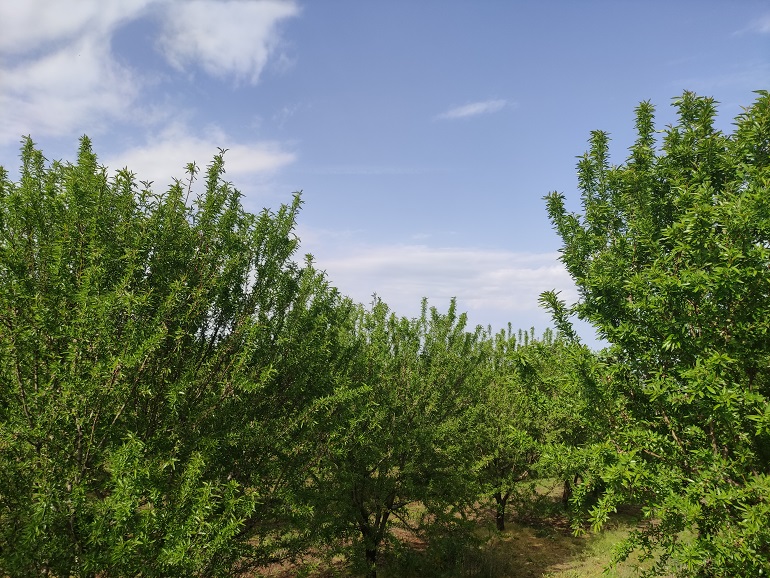Almond Tree Pests and Diseases

This post is also available in:
This post is also available in:
![]() Español (Spanish)
Español (Spanish) ![]() Français (French)
Français (French) ![]() Deutsch (German)
Deutsch (German) ![]() Nederlands (Dutch)
Nederlands (Dutch) ![]() العربية (Arabic)
العربية (Arabic) ![]() Türkçe (Turkish)
Türkçe (Turkish) ![]() 简体中文 (Chinese (Simplified))
简体中文 (Chinese (Simplified)) ![]() Italiano (Italian)
Italiano (Italian) ![]() Português (Portuguese (Brazil))
Português (Portuguese (Brazil)) ![]() polski (Polish)
polski (Polish)
Unfortunately, almond tree can suffer from various fungal and bacterial diseases and various pests.
Verticillium wilt. It is a soil borne fungal disease that enters the almond tree through the root system and can finally kill the tree. After some years, it actually blocks the water and nutrients that are supposed to be transferred from the roots to the upper parts of the trees, resulting in the collapse of whole branches. It is created from the pathogen Verticillium dahliae. Verticillium wilt has created huge economic loss in the nut orchards of California Valley. Unfortunately, the pathogen can live in the soil for many years, without any plant host. The first precaution against Verticillium wilt would be to keep a field fallow for 4 years, if cotton or Solanaceae species (Tomato, Potato, Tobacco) were cultivated in this field. Alternatively, a farmer can sow a variety of grasses for a couple of years or cover the ground with a special plastic cover (ask a licensed agronomist). The second precaution against Verticilium is to select a rootstock that is resistant to this disease. Over irrigation and the presence of certain weeds favor the rapid spread of the disease.
Crown gall. It is a bacterial disease caused by the pathogen Agrobacterium tumefaciens, which enters most often the young almond tree through wounds. The pathogen’s activity results in the creation of various galls, which can finally block the water and nutrients that are supposed to be transferred from the roots to the upper parts of the tree. Infected trees develop leaves of smaller size and become weak and unproductive.
Mites of various types and sizes can attack water stressed almond trees and reside in the underside of leaves. The most common symptom is that the color of the leaves turn yellow or bronze and the leaves often drop. The production is significantly reduced.
Almond Kernel Shriver, Anthracnose and Alternaria Leaf Spot are also common almond tree diseases. Read more on Almond Tree Diseases.
You can enrich this article by leaving a comment or photo of your almond tree pests or diseases.
2.) How to grow an Almond Tree from seed
3.) Growing Almond Trees for Profit
4.) Almond Tree Climate Requirements
5.) Almond Tree Soil Requirements & Preparation
8.) Planting Almond Trees – Number of Almonds Trees per hectare and acre
10.) Almond Tree Water Requirements
11.) Almond Tree Fertilization
12.) Almond Tree Harvest & Yield
13.) Almond Tree Pests and Diseases
15.) Wholesale Almonds for Sale
Do you have experience in Almond Tree cultivation? Please share your experience, methods and practices in the comments below. All the content you add will be soon reviewed by our agronomists. Once approved, it will be added to Wikifarmer.com and it will influence positively thousands of new and experienced farmers across the world.









































































